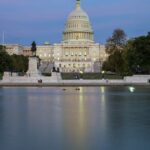John McLean PhD
Most people believe that the IPCC and the UNFCCC are UN agencies of great integrity. As a result, the IPCC is the coordinator and publiciser of lobbying, and the UNFCCC is taking the lobby of the IPCC and trying to force the government to make a political decision, with both agencies using the power of the UN media machine to advance their goals.
The IPCC describes its role as … “to establish … information relevant to understanding the scientific basis of human-caused climate change risks, potential impacts and options for adaptation and mitigation.”
The result of this is that we have a lobbying organization with a single focus, in this case man-made climate change rather than the bigger picture of why the climate is changing.
Lobbying organizations often make misleading or deceptive claims, and fail to mention other important information. The IPCC is no exception; the report characterizes dishonest lobbying:
- Prosecuting these issues is very important
The latest IPCC report states that the 2011-2020 average global temperature is only 1.1 °C above the 1850-1900 average global temperature, which is if we take the middle of each period over 140 years. It is less than 0.8 ° C / century, which does not pose any threat (and arguably exaggerated). The evidence that there is a threat is weak to non-existent.
- False claim to have evaluated the relevant literature
There is no evidence that the IPCC report evaluates the relevant literature in any way other than supporting the IPCC’s basic premise of human-caused climate change. We see this, to give just two examples, the “hockey stick” temperature graph, cited eight times in the 2001 IPCC report but proven to be false by MacIntyre and McKittrick a few years later, and in a second report (1995) cited unpublished. paper, written mainly by the authors of the IPCC report, which was widely criticized when it was finally published.
- Ignore material that undermines the lobbyist’s claims…
The IPCC ignored the paper that found that natural forces play a major role in climate change and, by implication, that human influence is minor. This is an important finding regarding human-caused climate-related risks because it shows that these risks are negligible.(1)
- … and supporting cherry-picking ingredients
For example, the IPCC’s sixth report (AR6, 2021) cites one paper that shows an increasing trend in US hurricanes and ignores eight other papers that show no increase.(2)
- Failed to verify basic data for lobby
The IPCC acknowledged this in response to my comments when I reviewed the IPCC report 2013. The 3017 PhD thesis and the 2018 audit of the HadCRUT4 temperature dataset showed more than 70 problems. This shows that the previous, highly influential IPCC report was based on false temperature data.
- Ignore the potential benefits of what lobbyists are fighting for
The IPCC report contains little discussion of the various benefits of warming. These include reducing the number of fatalities from extreme cold, increasing the area of land suitable for agriculture and promoting vegetation growth.
- Using unproven methods to support one’s claims
The IPCC cites many studies that use climate models to do one or more of the following
- Calculate the past temperature
- Calculate human influence on temperature
- Future temperature predictions (stopped at fifth IPCC report after repeated failures)
None of the climate models have been formally validated (ie, proven to be correct under some conditions) and the model record is lacking. Worse, most of the climate models used in the 2013 IPCC report exaggerated the warming during 1998-2012(3), and the latest generation of climate models, the CMIP6 set, produced more output than the previous CMIP5 model.(4)
- Presenting false or distorted knowledge
IPCC reports usually present false or distorted science. The concept of Global Warming Potential (GWP) is wrong because it considers each gas separately rather than mixed with others as it is in the atmosphere. Sometimes in combination these gases already absorb 100% of the infrared radiation at a certain wavelength, so adding more gases will not absorb more.
The IPCC report also states that greenhouse gases trap energy but all they do is slowly release energy into space and the energy budget diagram in each IPCC report misleadingly simplifies what is happening in the atmosphere and has little value.
- Make false claims about the accuracy and applicability of certain data
The IPCC report states that the global average pre-industrial temperature is known to a fraction of a degree but only four weather stations, all in Europe, recorded temperatures before the Industrial Revolution began. In the same way, the report shows that the rings of some trees are an accurate guide to the average temperature of the northern hemisphere.
- Making false claims about the strength of one’s “evidence”.
Many IPCC reports claim to have multiple lines of evidence for man-made warming, but the evidence is a mixture of simplistic (eg warming is already happening), claims based on climate model output, self-correlated examples. don’t prove the cause or just speculate.
- Determine if the quoted material is correct
IPCC reports list the findings made in published reports, books and papers (sometimes single papers) as if they were true evidence. A remarkable number of scientific papers have produced findings that cannot be replicated and some, perhaps only a small fraction, have been retracted/retracted.(5)
After the main text of the report has been compiled and refined through the review process, the IPCC presents government representatives with a draft Summary for Policymakers (SPM), written by selected authors of the main text. These representatives, some of whom are not familiar with the subject, negotiate the wording of the SPM within the given framework, and finally approve the document formally (6). The government will find it difficult to deny the IPCC’s claims after its representatives were forced to approve the document.
Around this time UNFCCC exaggerate IPCC’s claims even more by talking about the “threat of climate change”, urgent action and there is a “climate emergency”. None of this is true, but the UNFCCC forces governments to comply with the demands of international agreements such as the Paris Climate Agreement and Net Zero.
Lobbying is easy when the opposition is very weak. The IPCC and UNFCCC use the enormous media machine of the United Nations to spread their demands around the world in many languages. Papers that present counter-arguments and counter-claims to the IPCC report do not have that level of reach and do not have the same ability to plant stories in the local media. These alternative views struggle for exposure and may rarely be seen by the government or the public.
Governments have been pressured to fund climate research that supports the IPCC’s beliefs and support, through subsidies to certain bodies, the UNFCCC’s baseless push towards renewable energy and Net Zero.
The IPCC may learn to lobby from one of the UN’s sponsoring agencies, UNEP. From 1975 to 1992, at a time when there were several controversial environmental issues, UNEP was headed by microbiologist Mustafa Tolba. He noted that the success of one of UNEP’s lobbying exercises was achieved
- A core group of states that want the ban
- Powerful personalities – scientists and others – approve of these claims and prohibitions
- It mobilizes public opinion, and that opinion forces the government to act
(The second and third points are particularly relevant to the IPCC and UNFCCC lobby.)
But what happened to the controversial issue that UNEP was dealing with during the Tolba era?
- Claims in the 1970s that acid rain caused tree-killing proved false everywhere except a small, heavily polluted area of eastern Europe.
- The lobby to prevent the use of DDT, as a prelude to an outright ban, may have caused about 20 million deaths from malaria(7). Only a last-minute effort by more than 300 doctors, who argued that DDT was a cheap and effective malaria control, prevented the ban.
- The claim, based on a scientific paper, that CFCs destroy the ozone layer seems unlikely. After nearly 30 years and billions of dollars spent switching to alternatives, there is no sign that the ozone hole is shrinking. Many scientists have pointed out that the occurrence and size of these holes do not match the UNEP claims (8).
UNEP’s lobbying for false claims has embedded certain information so deeply in the minds of the public and governments that these claims are rarely considered. Even today some branches of the media still support UNEP’s beliefs and carry out manipulation of public opinion.
In every matter, UNEP jumps to conclusions long before scientists have properly investigated the subject, and then forces these assumptions onto the world. The formation of the IPCC was also driven by assumptions and conclusions before scientists had a chance to consider all the issues and potential causes of warming. (The IPCC was created, in part, as a result of the warming in the 1980s but the sudden occurrence of El Nino after 1977 could explain the warming.)
UN Secretary General Guterres can be described as a strong personality who supports the demands of the IPCC and UNFCCC lobby. His recent talk of the Earth boiling is just an exaggeration that is inconsistent with the IPCC’s statement of 1.1 degrees C warming in about 140 years.
Unfortunately, Guterres has been joined by various so-called scientists who lobby perhaps not much for the IPCC to protect their income and reputation.
Ultimately, the fear of man-made warming is based not on science, but on lobbying by the IPCC and the UNFCCC, and the wrong lobbying. The Paris Climate Agreement and the push for Net Zero, and related issues like forcing electric vehicles on us all, are very much in scientific justification but the result of lobbying that deceives the global media and pressures governments.
*****
(1) Roger Pielke Jr. makes a similar point when he says “the IPCC is supposed to review the scientific literature. All of it – that means it includes more than just a subset of studies that the author wants to use to build a narrative. It also means that the IPCC cannot ignore research from people that the author can find .(see https://rogerpielkejr.substack.com/p/misinformation-in-the-ipcc )
(2) As above
(3) IPCC AR5 2013, WGI SPM, p5 and synthesis report p SYR-6p
(4) see IPCC AR6, Fig 3.4 p435., Also, some comparisons of similar models and data from observations have been made, mainly by John Christy and Roy Spencer. For one of Spencer’s latest comparisons, see https://www.heritage.org/environment/report/global-warming-observations-vs-climate-models
(5) See http://retractionwatch.com/ where a database search with the subject field “(ENV) Climate Change” returns 131 items
(6) The representatives were given only one hour to read the final draft of the SPM for the Working Group I component of the IPCC AR6 report before voting for approval. See https://www.ipcc.ch/site/assets/uploads/2022/09/FINAL-REPT-P-54.pdf p 2
(7) I have seen estimates of 8 million and 40 million, plus the number between these two extremes, I have taken approximately the middle value. In 2006, the WHO declared DDT safe if basic guidelines were followed and the number of deaths decreased (see the article in the UNEP magazine for Africa, https://www.unep.org/resources/report/africa-environment-wasawaan-2-lingkungan-kita -wealth.
(8) See “New evidence for ozone depletion”, online at http://www.physorg.com/news104666673.html as well as https://newsblaze.com/thoughts/opinions/scientists-disprove-theory-of- cfc- link-to-ozone-depletion_38964/ , http://pubs.acs.org/doi/abs/10.1021/jp067660w and http://www.science.uwaterloo.ca/~qblu/Lu-2009PRL.pdf
Related




